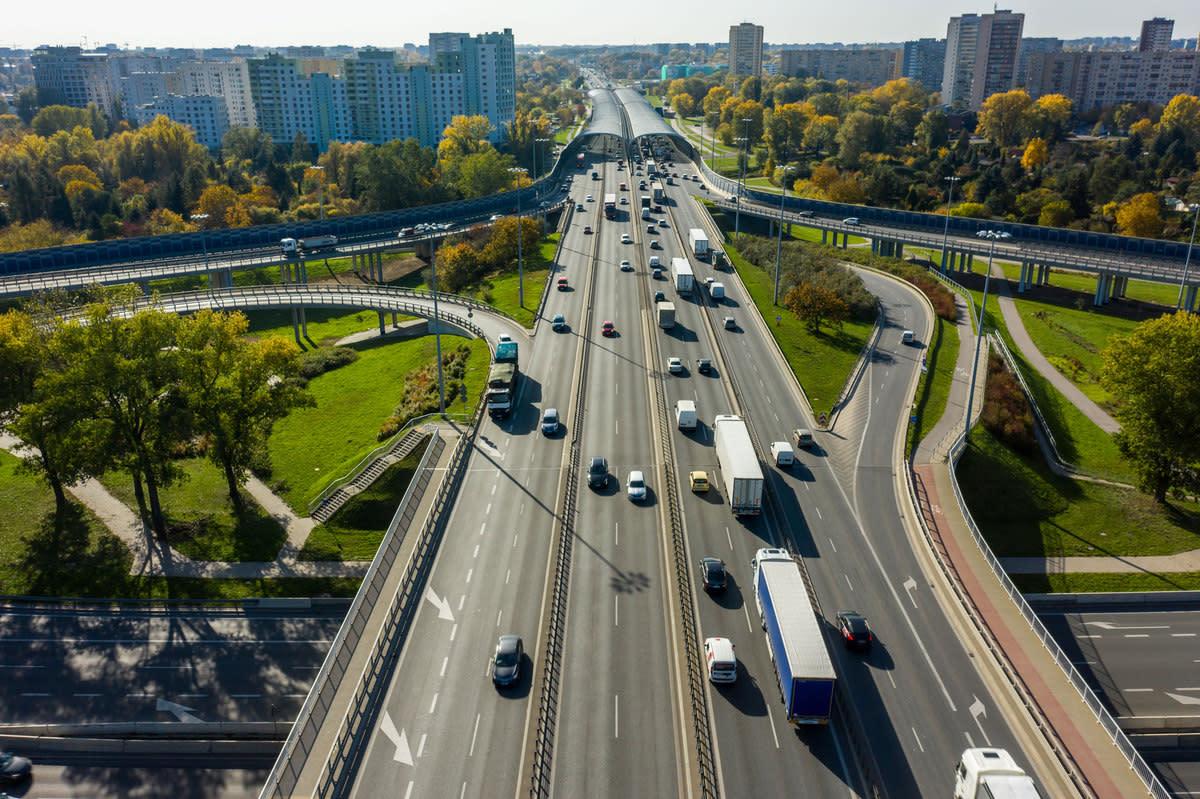Interview with Mobility Expert Katharina Wagner
Katharina Wagner is a passionate domain expert, panelist and speaker with extensive experience in shared mobility. As co-founder of the innovative zone-based car sharing concept Oply, she shares her experiences and observations of trends and developments in the sharing economy.
Looking at ongoing changes in the mobility landscape, what are the biggest trends that you are observing?
Looking at the more general trends, there are various developments which have been driving mobility for several years now: CASE (or ACES) has been the “battle cry” of various OEM CEOs and mobility experts for years now. It stands for connected, autonomous, shared and electric. Of course those are the trends which have been and will be driving mobility models, modes and behaviour. Within those trends we have seen new mobility services emerge such as ride-hailing, micromobility, new sharing and (short-term) leasing offers, just to name a few. There is also a trend towards integration and connection of the different mobility modes within bigger systems through cooperation or even private or public apps, which should create a seamless customer journey and make all modes easily accessible through one app (although there are no examples at the moment with 100% of mobility options integrated in one app, there does exist various cross-industry cooperation in that area). Looking a bit beyond terrestrial mobility, I am a big fan of VTOL (vertical landing and takeoff aircrafts) which are designed to cover all aspects of CASE and will have a revolutionary impact on the way we will move in future.
With the current situation of Covid-19 we have also seen major changes in the mobility behaviour. During the lockdown mobility around the world stood still, resulting in reduction of rides in all mobility modes, with extreme drops of up to 90% in public transportation, shared mobility, micro mobility etc. So the “shared” part in CASE has suffered the most due to Corona. On the other hand, we have seen a tremendous demand increase for individual (non-shared) mobility options, such as private car, short-term leasing options and also biking and walking. The operating model of especially short term sharing offers such as free float car sharing, scooter or ride sharing, resulted in trust issues as customers could not evaluate when and if the car was rented, if the car has been disinfected, or who might be joining the ride through ride sharing (here even the driver was a problematic factor). This forced all short term car sharing companies to pivot to longer term rentals to serve the customer demand for individual, non shared, and thus “secure” mobility. Also the pre-Covid-19 hyped mobility stations and apps were completely obsolete during the pandemic as people preferred to stick to one mode of mobility in order to reduce risk of infection.
At the same time, and for the first time in almost eight years that I have been working in mobility, we have seen cities taking very bold steps in changing their infrastructure to give more space to bike and pedestrian traffic. Many of those changes have been claimed to be impossible by city authorities before the pandemic, which has then transformed our urban areas to something we have been striving to achieve for so many years: Cities have become more livable - with more space for the people and less for the traffic. The major shift to home office working has tremendously contributed to that as well.
What is your view on the shifting mobility needs consumers have?
We're in a transition phase at the moment. It's still to be seen how the behaviour of consumers, companies and governments will evolve after the pandemic. I am positive that various cities will keep at least parts of the changes permanently. Also, around 50% of German companies claimed to enable their staff to work from home office after corona, at least sometimes. This should lead to a lower mobility need in general, resulting in lower traffic, congestion, parking search and pollution. With time, public transportation will definitely gain in importance again as the major mobility mode for millions of people around Europe.
At the same time the private car should decrease in importance after Corona. There are some indicators which support this assumption: we have not seen private car purchases explode, on the contrary, people buy less cars at the moment, but what does explode is the number of flexible leasing options for individual cars with companies such as Cluno or (newly established) Sixt+. It shows that people prefer to enter short term commitments for car ownership, which can also be easily resolved when not needed anymore. I expect this to be the case after the pandemic.
During the last years you have been working in the field of Shared Mobility. What were the specific challenges and opportunities you experienced?
Running a car sharing operations can be very demanding. I have been able to learn in both areas – free float and zone or station based car sharing and there are some common and some different challenges and opportunities in those operational models.
Let’s start with the common ones: Both have the potential to be a piece of the multi-modality puzzle in order to make the individual vehicle obsolete. This has been a driving factor for me when working in shared mobility: contributing to make our cities more livable. Both do change the way how people move and therefore have a huge impact on their lives. Shared mobility also has a social aspect, giving access to vehicles to people who did not have that option before. There are mainly two challenges in both systems which I’d like to mention: First, the access to city parking - it can be a very long, frustrating and not plannable process to negotiate parking solutions with each individual city. And second, a very streamlined operation - as there are various operational pitfalls which can easily make it impossible to turn any profits.
Looking at the different operational modes, free floating is essentially based on big numbers. To make the service attractive one needs to cover a considerably big operating area, provide a big number of vehicles to make those fast and easily accessible to the consumers and attract enough riders per day to reach a reasonable vehicle utilization as the average trip is rather short. This results in rather high capital requirements to run this kind of operation. On the opportunity side, free floating companies can benefit from economies of scale much faster. They also provide a lot more customer insights and learnings of running a professional fleet, helping to improve operational excellence. We have seen free floating car sharing to be a rather strategic investment (often of OEMs or rental companies) that see the need to reinvent themselves before somebody else reinvents and disrupts their markets. And although various locations do turn profits, the investors did (and still do) need a lot of persistence and focus on the strategic aspect before full operational break-even can be reached.
A station or zone based car sharing model can be run profitably with much lower size in fleet, customers, cities, and investment. It allows for growth with customer demand, very targeted marketing activities, and requires lower fleet sizes as cars don’t need to cover big home areas etc. The opportunity here is really to replace the private car for the community around the station / zone and become the mobility mode of choice in situations when an individual vehicle is needed. Growth and numbers are slower, but the impact in reducing private car ownership can be much higher compared to free float.
Which opportunities do you see for the Car Sharing sector in the future?
Shared Mobility is here to stay. Various developments and trends will push it to become an integral part of our lives, at least in urban areas. And both sharing modes – free float and station based – are just two choices in a mobility mix which has to exist in a city to make the private car obsolete. They can not only coexist, they actually complement one another perfectly, depending on the type of trip the customer is planning. As part of the mobility mix of a city, car sharing can contribute to reducing congestion, parking pressure, emissions and traffic jams.
There will also be an impact on the automotive industry through car sharing. The car sharing market size is predicted to be a multi-billion business by various research institutes and eventually this business model will have an impact on OEMs, that will build and sell more shared and sharing-ready vehicles over time and less individually owned ones.
But I think we will see even more consolidation in the industry driven by lower demand through Corona, intense price competition and the very high capital needs of this business model. Hopefully at the end of this phase, financially sustainable sharing companies will be formed and capable of staying permanently. This is an important factor, as people will only change their mobility behaviour, or maybe even sell privately owned cars, if they are able to rely on the mobility options to be present permanently.
How can city authorities help to make Car Sharing more successful?
City authorities play an important role for the car sharing operators’ success. They are the “gates” to the city parking and should establish clear and fair regulations which define under what conditions a car sharing company can offer its services within the city. This is essential for business planning, but also to be able to offer a sustainable and reliable service to the consumers. There are some great examples of cities in Europe, which have clear regulations for car sharing. However, and sadly, that is the case in only a handful of locations. We need a clear sign from city authorities that they are pro car sharing and are willing to support it with actions - not only words.
What else do you think cities need to do to become smarter in terms of mobility?
Car sharing is just one mobility mode of the modal mix of a city. Authorities, together with the operators, should work on smart solutions in order to make it as transparent and easy as possible for the residents to choose alternative mobility options to the private car. This can include mobility stations like e.g. in Hamburg, or even mobility flat rates as provided in Augsburg. There is no “secret sauce” as every city and every mobility mix is truly unique. So the key is cooperation and a true give and take of both, authorities and mobility providers.
Looking a bit beyond mobility modes, there are great technologies out there which will be part of a smart city and improve mobility in general. Connected vehicles (we had that aspect in CASE) which communicate with one another and with street infrastructure could have a huge impact in improving congestion, finding parking spaces and much more. Possibilities are endless. I think it is crucial for the city authorities to have a holistic view on mobility, create a clear strategy and execute on it relentlessly, independent of elections or even changes in political direction of city governments. This can also help authorities to work with limited budgets as it will make it easier to motivate private companies to undertake long term (infrastructure) investments in a certain city.
And last but definitely not least, city authorities have to think outside of the box. In so many discussions with city governments I hit a wall because “there is no law” regulating this or that aspect of my business proposition. It is the nature of technologies and new business models, that our current laws and legislations have no clear answers on how to handle those. But I have seen great leadership examples of individuals within city authorities, who found creative ways to still make it possible, even though the laws for that specific purpose have not been written yet. We need that kind of pioneering spirit within city authorities to bring more innovation to our roads.
Which roles do you think partnerships play in smart mobility ecosystems?
The more information and experience is bundled, the smarter a mobility ecosystem can become. Therefore partnerships are essential for the development of smart mobility ecosystems. In my experience startup companies are much more open to partnerships and cooperation and I have seen great support within the startup community in Berlin. And also within the old economy - while silo thinking was more present in the past - we are starting to see more cooperation with even the biggest rivals; e.g. BMW and Daimler establishing a JV for mobility business models, or R&D cooperation for autonomous vehicles. That is a very good development on the way to smarter and more successful mobility offers.
What technologies do you see as the biggest enablers for the coming years in our changing mobility ecosystem?
I would like to emphasize the two technological trends that will bring mobility to the next level: connected cars (and cities) and autonomous driving. There is so much potential which can be raised through those technologies, that I believe, we still cannot evaluate the full impact it will have on our lives. It might be comparable to the invention of the iPhone which launched full tsunamis of new business models and offerings. This is definitely going to happen with connectivity and autonomy as well. But we will still have to wait a bit for it. Definitely more than five to ten years.
About Katharina Wagner

Katharina Wagner is a passionate domain expert, panelist and speaker with over 14 years experience in mobility, digital business models and customer centricity. In the past three years Katharina has co-founded and built the innovative zone-based car sharing concept Oply which launched in 3 cities within 1 year. Before Oply Katharina held the position of Head of Business Development Europe for car2go, Daimlers car sharing daughter, and set up most of the European car2go locations as well as the EV strategy for car2go.
Katharina holds a MBA from the WHU – Otto Beisheim School of Management and a Diploma in International Business. Before her mobility life Katharina has been working across various industries in Media, Loyalty, Automotive and online retail.
To learn more about our mobility approach, check out our mobility page.
 Simone MittererGlobal Head of Brand and Communications, Germany
Simone MittererGlobal Head of Brand and Communications, Germany

